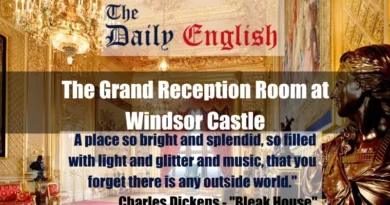Does Windsor Castle Have a Dungeon?
Windsor Castle does indeed have a dungeon, primarily located in the Clewer Tower and the Curfew Tower. Historically, these dungeons were used to imprison various offenders, including during significant events such as the English Civil War when many Royalist prisoners were held there.
The conditions in the dungeon were harsh, with minimal food and basic straw bedding provided for the prisoners. Over time, the dungeon spaces have undergone changes and refurbishments. While they are no longer used as prisons, they have been repurposed for various modern uses, including exhibitions and events.
Key Takeaways
| Section | Key Points |
|---|---|
| Location and Description of the Dungeon | Location: Primarily within the Curfew Tower. Description: Built between 1227 and 1230, among the oldest structures in the Lower Ward. Function: Initially designed for confinement, used during conflicts, including the English Civil War. Current Use: No longer used as a dungeon; now used for storage and events. |
| Historical Usage of the Dungeon | Early Records: Used for offences like debt, sorcery, and treason since the medieval period. Significant Periods: Extensive use during the English Civil War to detain Royalist prisoners. Types of Prisoners: Common criminals, political prisoners, Royalist soldiers, and supporters of King Charles I. Conditions: Harsh, with minimal rations, poor sanitation, and overcrowding. |
| Notable Historical Events Involving the Dungeon | Key Events: English Civil War – detention of Royalist prisoners. Notable Incidents: Imprisonment of Scottish prisoners after the Battle of Preston (1648). Notable Prisoners: Royalist commanders and noblemen. |
| Evolution and Changes Over Time | Usage Changes: Shift from punitive use to storage and other non-punitive uses by the 17th and 18th centuries. Refurbishments: 18th-century partitioning and 20th-century modifications for storage and temporary housing. WWII: Used to store valuable items, including stained glass windows. |
| Modern Use and Current Status | Current State: Preserved for historical significance but not regularly open for public tours. Contemporary Uses: Used for exhibitions and educational purposes, highlighting historical conditions and punitive practices. |
Let’s discuss in detail:
Introduction to Windsor Castle’s Dungeon
Windsor Castle, an iconic symbol of British heritage, is renowned for its majestic architecture and royal history. Amid its grandeur lies a lesser-known yet intriguing aspect: its dungeon. The presence of a dungeon at Windsor Castle offers a deeper historical perspective, illustrating a less-known aspect of this otherwise magnificent residence.
Historically, dungeons were integral to medieval castles, serving as places of imprisonment and punishment. Windsor Castle is no exception, with its dungeon spaces providing a glimpse into the punitive practices of the past.
Location and Description of the Dungeon

Windsor Castle’s dungeon spaces are primarily located within the Curfew Tower. This area was designed for confinement and has served various purposes over the centuries.
Curfew Tower
The Curfew Tower, also historically known as Clewer Tower, houses one of Windsor Castle’s notable dungeon spaces. Built between 1227 and 1230, this tower is among the oldest surviving structures in the castle’s Lower Ward.
The dungeon in this tower was used extensively during periods of conflict, including the English Civil War. The tower’s thick stone walls and secure construction reflect its function as a holding area for prisoners, ensuring they could not escape easily. During its use as a dungeon, prisoners experienced harsh conditions, with minimal lighting and basic provisions.
The dungeon space included various cells, and repairs and modifications were made over the centuries to accommodate different uses.
Today, the space is no longer a dungeon and serves other purposes, such as storage and event hosting.
Historical Usage of the Dungeon
The dungeons at Windsor Castle have a rich usage history, particularly during tumultuous periods such as the English Civil War. These spaces were utilized to imprison various offenders, ranging from common criminals to political prisoners.
Early Records of Dungeon Use
Early records indicate that the dungeon spaces at Windsor Castle were used for imprisonment as far back as the medieval period. The dungeons detained prisoners accused of debt, sorcery, and treason, reflecting the punitive practices of the time.
Significant Periods of Usage
The English Civil War (1642-1651) marked a significant period of dungeon use at Windsor Castle. During this time, Parliamentary forces occupied the castle, which used its dungeons to detain Royalist prisoners.
The Curfew Tower’s particular dungeon was crammed with prisoners, often exceeding its intended capacity. Historical accounts from this period describe the dire conditions within the dungeon, with prisoners receiving meagre rations and enduring harsh treatment.

Types of Prisoners Held and Their Offenses
The dungeons at Windsor Castle were used to detain a diverse range of prisoners. Common criminals, such as thieves and debtors, were frequently confined in these spaces. Political prisoners and individuals accused of serious offences, such as treason and sorcery, were also held in the dungeons.
During the English Civil War, many prisoners detained in the Curfew Tower dungeon were Royalist soldiers and supporters of King Charles I. These prisoners faced harsh conditions, with limited food and water, and were often subjected to psychological torment due to the isolation and darkness of their confinement.
Conditions and Treatment of Prisoners
The conditions within Windsor Castle’s dungeons were notoriously harsh. Prisoners received minimal sustenance, often limited to basic bread, cheese, and water rations. Beds were typically made of straw, and the dungeon spaces were cold, damp, and poorly lit.
The lack of sanitation and the overcrowded conditions further exacerbated the prisoners’ suffering. Historical accounts reveal that prisoners of higher social standing, such as members of the gentry, could sometimes secure slightly better treatment by paying fees to their captors. However, even these prisoners faced significant hardships and were not immune to the harsh realities of dungeon life.
The existence and historical usage of dungeons at Windsor Castle provides a compelling glimpse into the castle’s multifaceted history. These dungeon spaces, primarily located in the Curfew Tower, played a crucial role during periods of conflict and unrest, serving as grim reminders of the punitive practices of the past.
The architectural features and historical records of these dungeons underscore the castle’s significance as a royal residence and a site of imprisonment and punishment.
Notable Historical Events Involving the Dungeon
The dungeons of Windsor Castle played significant roles during various historical events, particularly during periods of conflict and political upheaval.
Key Historical Events Where the Dungeon Played a Significant Role
One of the most notable periods of dungeon use was during the English Civil War. Windsor Castle was a strategic site, and its dungeons were used extensively to detain Royalist prisoners captured by Parliamentary forces. The overcrowding and harsh conditions during this time are well-documented, highlighting the dungeon’s role as a tool of war and punishment.
The fear of witchcraft was prevalent during this period, though specific instances of individuals accused of witchcraft being held in Windsor Castle’s dungeons are not extensively documented.
Specific Incidents and Notable Prisoners
One specific incident of note involves the imprisonment of Scottish prisoners following the Battle of Preston in 1648. Many of these prisoners were held in Windsor Castle’s dungeons, experiencing severe overcrowding and deprivation. Historical records mention that the dungeon housed up to 165 prisoners at one point, far exceeding its intended capacity.
Notable prisoners included figures such as Royalist commanders and noblemen who opposed Parliamentary rule. While high-profile detainees did experience harsh treatment, the severity varied. Some secured slightly better conditions due to their status and ability to pay fees, but imprisonment conditions were harsh overall.
Evolution and Changes Over Time

Over the centuries, Windsor Castle’s dungeons’ function and use evolved, reflecting broader changes in the penal system and societal attitudes towards punishment.
Changes in the Usage of the Dungeon Through Different Historical Periods
Initially, the dungeons served a clear punitive function, detaining a range of prisoners from common criminals to political enemies. However, by the late 17th and 18th centuries, their use began to decline as more formalized prison systems were developed.
During the Victorian era, penal philosophy significantly shifted towards reform and rehabilitation. Consequently, the use of dungeons as primary places of imprisonment diminished. Windsor Castle’s dungeons were gradually repurposed for storage and other non-punitive uses.
Refurbishments and Modifications Made to the Dungeon Spaces
Throughout the 18th and 19th centuries, the dungeon spaces underwent various refurbishments. In the 18th century, parts of the dungeon in the Curfew Tower were partitioned to create living quarters for the castle’s bell ringer. By the 20th century, these areas had been further modified for storage and temporary housing during emergencies.
During World War II, the dungeon spaces were used to store valuable items, including parts of Windsor Castle’s stained glass windows, to protect them from bomb damage.
Modern Use and Current Status

Today, the dungeon areas at Windsor Castle are no longer used for imprisonment. Instead, they serve various functions aligned with the castle’s role as a historical site and tourist attraction.
Current State of the Dungeon Areas Within Windsor Castle
The dungeons have been preserved to reflect their historical significance. While the Curfew Tower at Windsor Castle does indeed contain historical dungeon areas and has been preserved as part of the castle’s heritage, it is not regularly open to the public as part of typical visitor tours.
The Curfew Tower dates back to the 13th century and has been used for various functions, including exhibitions and events. It contains remnants of its use as a dungeon, including an escape tunnel and stocks used for prisoners.
Contemporary Uses of the Former Dungeon Spaces
In recent years, the dungeon spaces have been used for educational and exhibition purposes. They connect to the past, illustrating the castle’s multifaceted history. Exhibits often highlight prisoners’ conditions, using historical artefacts and accounts to educate the public.
Conclusion
The dungeon spaces at Windsor Castle, primarily located within the Curfew Tower, reflect a significant aspect of the castle’s multifaceted history. Built between 1227 and 1230, the Curfew Tower is one of the oldest structures in the castle’s Lower Ward, designed for secure confinement.
Throughout history, especially during the English Civil War, these dungeons were used to detain various prisoners, from common criminals to political detainees, under harsh conditions.
Although no longer used for imprisonment, these spaces have been preserved and repurposed for educational and exhibition purposes, offering visitors insights into the castle’s storied past and the punitive practices of medieval and early modern England.
FAQ
Where is the dungeon located within Windsor Castle?
The dungeon is situated in the Curfew Tower, a prominent feature on the western end of Windsor Castle. Constructed between 1227 and 1230, the tower has historically been known as the Clewer Tower and later as the Bell Tower. Its robust structure includes walls approximately thirteen feet thick, providing a formidable setting for the dungeon beneath.
What was the original purpose of the dungeon?
The dungeon served as a detention facility for various offenders, notably during the English Civil War when Parliamentarian forces used it to imprison Royalist soldiers. Prisoners experienced harsh conditions, with minimal provisions and overcrowding, reflecting the punitive measures of the era.
Who were notable prisoners held in the dungeon?
During the Civil War, the dungeon confined numerous Royalist soldiers and supporters. Accounts indicate that, at times, up to 165 prisoners were held simultaneously, including members of the gentry, as evidenced by scratched coats of arms on the walls.
Is the dungeon open to the public?
Currently, the dungeon is not accessible to visitors. While the Curfew Tower’s exterior can be viewed during a visit to Windsor Castle, the interior, including the dungeon, remains closed due to its use for meetings and exhibitions.
Did Queen Elizabeth II ever use the dungeon?
During World War II, Princesses Elizabeth (later Queen Elizabeth II) and Margaret occasionally took refuge in the dungeon during air raids. Their former nanny, Marion Crawford, recounted that the princesses would retreat to the beetle-infested dungeons, describing it as living in a dimly lit underworld without central heating.
Are there any ghost stories associated with the dungeon?
While Windsor Castle is renowned for various ghost tales, no widely documented hauntings are specifically linked to the dungeon. The castle’s rich history includes numerous legends and reported apparitions in other areas.
What architectural features define the dungeon?
The dungeon comprises a large chamber with a vaulted ceiling and seven rectangular recesses around the sides, adapted in the 14th century to hold prisoners. The thick walls and limited light sources contributed to its formidable and oppressive atmosphere.
Were there any escape attempts from the dungeon?
Historical records do not prominently document any successful escape attempts from the dungeon. The formidable construction and strict supervision likely deterred prisoners from attempting to flee.
How was the dungeon accessed within the Curfew Tower?
Access to the dungeon was through a secured entrance within the Curfew Tower. Specific details about the entry mechanisms are scarce, but it typically involved descending from the main levels of the tower to the subterranean chamber.
What conditions did prisoners face in the dungeon?
Prisoners endured harsh conditions, including overcrowding, minimal rations such as a daily allowance of biscuits, cheese, and butter valued at threepence, and straw beds. The environment was dark and damp and lacked proper sanitation, reflecting the punitive nature of medieval imprisonment.
Has the dungeon been featured in any media or films?
While the dungeon itself has not been prominently featured, Windsor Castle appears in various documentaries and films. Media focusing on the castle’s history may include references to the dungeon and its role during significant events.
Are there similar dungeons in other UK castles?
Yes, many historic UK castles, such as the Tower of London, feature dungeons with rich histories. These subterranean chambers were commonly used for imprisonment and often share architectural similarities with Windsor’s dungeon.
What measures were taken to protect the royal family during WWII?
During World War II, the royal family relocated to Windsor Castle for safety. The young princesses, Elizabeth and Margaret, used the dungeon as a bomb shelter during air raids. Additionally, valuable items like the crown jewels were hidden in ordinary-looking hatboxes within the castle’s vaults to safeguard them.
Can I see the Curfew Tower during a visit to Windsor Castle?
While the Curfew Tower’s exterior is visible during a visit to Windsor Castle, interior access, including the dungeon, is restricted. Visitors can explore other parts of the castle and learn about its history through exhibitions and guided tours.









